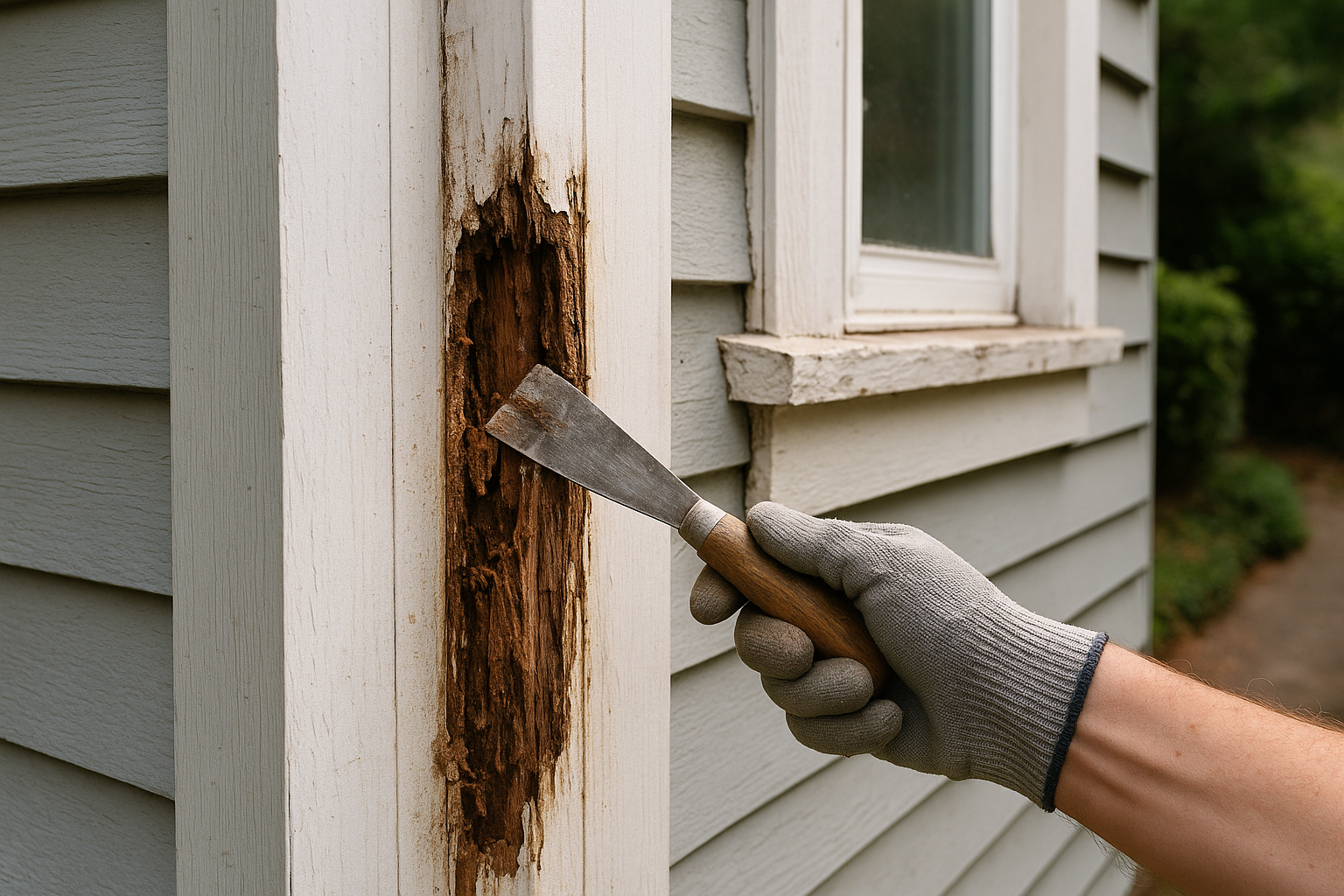How to Identify and Fix Wood Rot in Your Portland Exterior Trim
June 13, 2025
How to Identify and Fix Wood Rot in Your Portland Exterior Trim
With Portland’s famously rainy weather, wood rot is one of the most common maintenance issues homeowners face. But if caught early, it’s also one of the most manageable. This guide covers how to detect rot, stop it from spreading, and repair the damage to keep your home’s trim and siding structurally sound and looking great.

What Causes Wood Rot?
Wood rot is caused by fungi that thrive in damp, poorly ventilated areas. Portland’s moisture-rich climate is ideal for rot to develop, especially around trim, fascia, window sills, and door frames. Leaky gutters, clogged downspouts, or unsealed paint can allow water to sit and seep into wood, creating the perfect environment for decay.
How to Spot It Early
- Soft spots: Press on wood trim—if it gives or feels spongey, rot may be present.
- Discoloration: Look for dark patches, streaking, or paint that bubbles and peels easily.
- Fungal growth: Mold or mildew around joints and seams can be a sign of hidden rot.
- Musty smell: Damp, earthy odors are a red flag in enclosed porch corners or window trim.
Fixing the Damage
If the rot is superficial, you can scrape out the soft wood and fill it with epoxy filler. For deeper damage, remove and replace the affected section. Always prime and paint exposed areas right away to seal out future moisture. Use treated lumber or rot-resistant species like cedar for replacements.
Preventing Future Rot
- Inspect seasonally: Look over trim, sills, and eaves in spring and fall.
- Keep it sealed: Repaint and re-caulk any gaps or cracks promptly.
- Divert water: Ensure gutters, downspouts, and soil grade move water away from siding.
- Ventilate: Attics and crawlspaces should be dry and properly ventilated.
Protect Your Trim, Protect Your Home
Wood rot might be common in Portland, but with the right approach it doesn’t have to be costly. Early detection and smart repair choices will save you time, money, and structural headaches down the line—keeping your home dry, healthy, and beautiful for years to come.